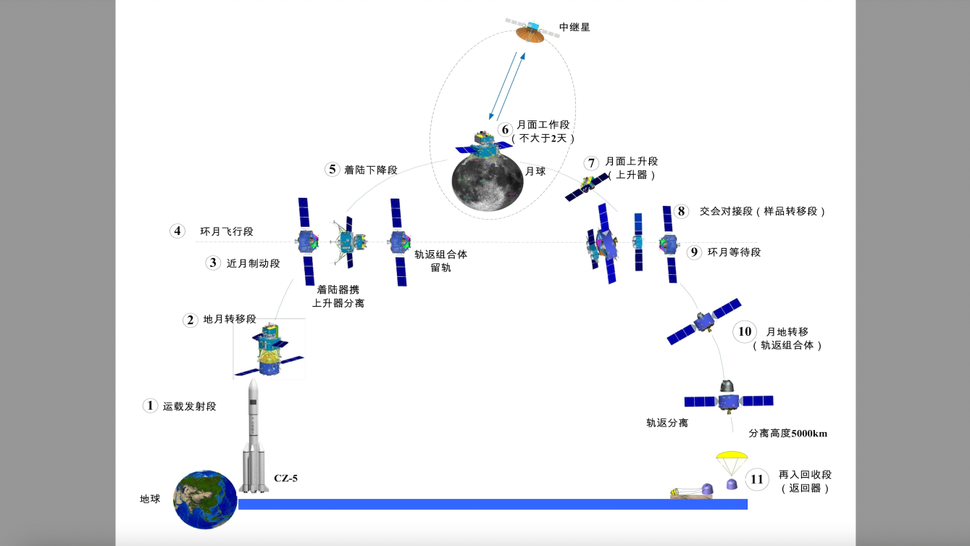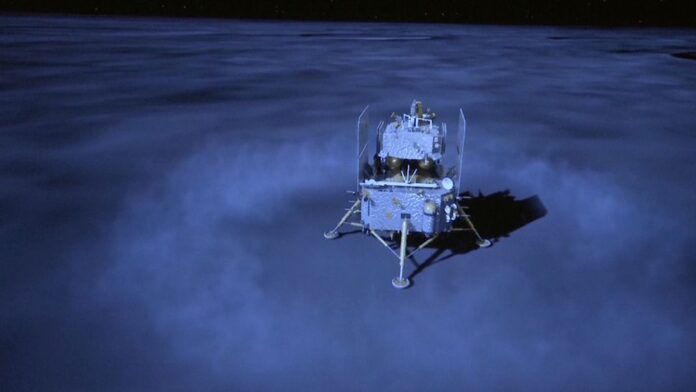China’s Chang’e 6 mission has achieved a historic milestone in lunar exploration by successfully landing on the far side of the Moon inside the Apollo crater within the South Pole-Aitken basin on June 2, 2024. This remarkable feat marks China’s second lunar sample return mission after the successful Chang’e 5 mission in 2020, which collected samples from the near side of the Moon. The Chang’e 6 mission holds immense significance as it will collect up to 2 kg of lunar soil and rock samples from the far side, including subsurface samples up to 2 meters deep using a drill. This mission will provide valuable insights into the geology and evolution of the lunar far side, a region that has remained largely unexplored due to the challenges of direct communication with Earth.
Landing on the Lunar Far Side
Chang’e 6 touched down at 6:23 AM Beijing Time on June 2, 2024 in the southern part of the Apollo crater within the South Pole-Aitken basin, one of the largest and oldest impact craters in the solar system. The landing on the far side of the Moon presents unique challenges, as the lander cannot communicate directly with Earth due to the Moon’s bulk blocking the signal. Instead, the lander relied on a relay satellite, Queqiao, which China launched in 2018 to facilitate communications between the far side and Earth. Despite these challenges, the Chang’e 6 lander successfully navigated to its target landing site and began its scientific operations. China selected the landing site for its scientific potential, as the Apollo crater is believed to contain materials from deep within the lunar crust and mantle, providing a unique opportunity to study the Moon’s interior.

Collecting Lunar Samples
The Chang’e 6 mission will collect and return lunar samples to Earth using a lander and ascender module. The lander equipped with a robotic arm and a drill capable of retrieving subsurface samples up to 2 meters (6.5 feet ) deep. The target sample mass is up to 2 kg ( 4.4 pounds), which the mission will transfer to the ascender module for launch into lunar orbit. Once the samples are in orbit, the ascender module will rendezvous with the orbiter module, which will capture the samples and place them in a return capsule. This capsule will then depart the Moon and return to Earth, landing in Inner Mongolia around June 25, 2024.
Scientific Payloads and Rover
In addition to the sample return capabilities, Chang’e 6 carries a suite of scientific instruments from international partners, including France, Italy, Pakistan, and Sweden. These instruments will study various aspects of the lunar environment, such as the surface composition, exosphere, and radiation levels. The mission also includes a small, previously undisclosed rover that will study the lunar surface composition and search for water ice. The rover will provide valuable data on the distribution and abundance of water on the lunar far side, which is a key resource for future human exploration and potential in-situ resource utilization.
Return to Earth
The return of the Chang’e 6 samples to Earth is a critical phase of the mission, as it will allow scientists to study the samples using advanced laboratory techniques that are not possible on the lunar surface. The return capsule is designed to withstand the intense heat and forces of re-entry, ensuring the safe delivery of the precious cargo. Once the capsule lands in Inner Mongolia, China will retrieve it and transport the samples to laboratories for analysis. Scientists around the world will have the opportunity to study the samples, which are expected to provide new insights into the formation and evolution of the Moon, as well as the potential for future human exploration.
Significance and Future Implications
The Chang’e 6 mission represents a significant milestone in China’s lunar exploration program and in the global effort to understand the Moon. By landing on the far side and returning samples, the mission will provide unprecedented insights into a region of the Moon that has remained largely unexplored. The mission’s findings will contribute to our understanding of the Moon’s formation and evolution, and may also shed light on the potential for future human exploration. The presence of water ice on the lunar surface, for example, could be a valuable resource for future lunar bases, providing water for drinking, agriculture, and even rocket fuel.
Conclusion
China’s successful landing of Chang’e 6 on the lunar far side is a testament to the country’s growing capabilities in space exploration. The mission’s achievements, from the complex landing to the collection and return of lunar samples, demonstrate China’s commitment to advancing our understanding of the Moon and paving the way for future human exploration. As the world watches the progress of the Chang’e 6 mission, it is clear that lunar exploration is entering a new era of international collaboration and scientific discovery. With the potential for future missions to the Moon and beyond, the future of space exploration has never been brighter.
